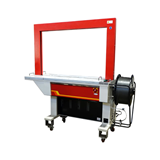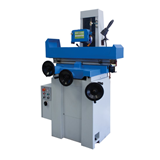Explore medium excavator prices, features, and key buying factors for Australian construction projects. Get expert insights and make an informed decision.
Key Takeaways
- Size Range: Medium excavators typically weigh between 10–25 tonnes, making them versatile for large-scale earthmoving and construction tasks.
- Applications: Ideal for roadworks, bulk earthmoving, and residential subdivisions.
- Attachments: Commonly compatible with hydraulic thumbs, buckets, and hammers, enhancing versatility.
- Fuel Efficiency: Expect better fuel economy compared to larger excavators, with hybrid options available for increased efficiency.
- Financing: Multiple options exist, including leasing and financing to manage upfront costs.
- Brands: Popular choices include Komatsu, Cat, and Hitachi.
- Total Cost of Ownership: Consider maintenance, uptime, and long-term service costs when choosing a model.
Introduction
For construction professionals seeking a balance between power, capacity, and fuel efficiency, the medium excavator is a reliable, all-purpose option. Whether you're involved in bulk earthmoving, roadworks, or residential subdivision development, these excavators provide the performance and durability required for demanding tasks, without the sheer size and cost of a large excavator.
What is a Medium Excavator?
Medium excavators generally range from 10–25 tonnes in weight. They strike a balance between the heavy-duty power of large excavators and the maneuverability of smaller machines. With capabilities that extend to depths of 6–7 metres and a reach of 10–12 metres, these machines are perfect for a variety of tasks that demand significant lifting power and precision digging.
Key Features of Medium Excavators
- Hydraulic Systems: The advanced hydraulic systems in these excavators provide strong lifting power, making them ideal for bulk digging and material handling.
- Boom Reach: Medium excavators feature a long boom that allows for extended reach without compromising on power, essential for jobs like roadwork or large-scale excavation.
- Swing Radius: The swing radius is optimised for flexibility, allowing operators to access tight spaces while retaining stability and lifting capacity.
Applications: Where Medium Excavators Shine
- Roadworks: The versatility of medium excavators makes them the go-to machine for tasks like digging trenches, excavating subgrades, and preparing roadbeds.
- Bulk Earthmoving: Medium excavators are designed for large material movement, making them perfect for moving large amounts of dirt or gravel on site.
- Residential Subdivisions: Whether you’re preparing foundations, installing utilities, or conducting drainage work, a medium excavator’s balance of power and precision is ideal for residential development.
Attachments: Expanding Capabilities
Medium excavators can be equipped with a variety of attachments to boost efficiency:
- Hydraulic Thumbs: Useful for handling and sorting materials such as rocks or debris.
- Buckets: Swappable buckets allow for easy digging, trenching, and loading.
- Hammers: Break rocks or concrete efficiently with a hydraulic hammer attachment, which can also be used for demolition projects.
Fuel Efficiency and Hybrid Options
Medium excavators are generally more fuel-efficient than larger machines, consuming an average of 10–15 litres per hour depending on workload. Hybrid models are available from brands like Komatsu, offering reduced emissions and further cost savings over time. These fuel-efficient models are particularly appealing for long-term cost savings on high-demand construction sites.
New vs. Used Medium Excavators in Australia
- New Excavators: A new medium excavator can cost anywhere from $150,000 to $250,000, depending on the brand and model. This option guarantees a warranty and the latest features.
- Used Excavators: Opting for a used model can save significant costs, with prices ranging between $80,000 to $150,000. However, consider potential repair costs, maintenance history, and remaining warranty when purchasing used.
Popular Brands in the Australian Market
- Komatsu: Known for durability and fuel efficiency, Komatsu offers a range of medium excavators, including the PC200 series.
- Cat: Caterpillar’s medium excavators, such as the 313 GC, provide powerful lifting capacity and advanced technology for construction professionals.
- Hitachi: Offering machines like the ZX225 series, Hitachi is renowned for efficient operation and easy maintenance.
Total Cost of Ownership
When purchasing a medium excavator, consider the total cost of ownership, which includes not only the upfront purchase price but also:
- Maintenance: Regular servicing is essential to ensure long-term operation. Routine maintenance costs typically range from $5,000–$10,000 per year.
- Uptime: The reliability of your machine affects project timelines. Choosing a high-quality brand can reduce downtime and the need for repairs.
- Repairs: While medium excavators are built to last, repairs can still add up. Keep an emergency fund for major components such as the hydraulic pump or undercarriage.
Transport and Compliance Regulations
Medium excavators typically weigh between 10 to 25 tonnes, which places them well above the towing threshold for standard vehicles. In Australia, moving these machines generally requires a heavy-duty float or low-loader trailer, and operators must comply with National Heavy Vehicle Regulator (NHVR) guidelines. Key transport considerations include:
- Permits: Any load over 2.5 metres wide or 4.3 metres high typically requires an oversize vehicle permit under NHVR regulations.
- Escort vehicles: Required if transporting a unit over certain width thresholds (usually 3.5m+, depending on the state).
- Route planning: Some roads or bridges have restricted weight limits, particularly in regional or urban areas.
- Chain of Responsibility (CoR): All parties in the logistics chain — including site managers and hire companies — are legally responsible for ensuring compliance.
It’s essential to work with a transport provider familiar with heavy equipment haulage and the relevant state-based regulations (e.g., VicRoads, Transport for NSW, Main Roads WA).
Financing and Leasing Options
The purchase cost for a new medium excavator in Australia typically ranges from $120,000 to $300,000, depending on tonnage, brand, and optional features. Given the capital involved, most buyers opt for equipment finance or operating leases to preserve cash flow and gain potential tax benefits.
Key financial insights:
- Finance interest rates currently range between 5.25% to 7.5% p.a., depending on the borrower's credit profile and term length (usually 3–5 years).
- Operating leases offer lower monthly payments, asset flexibility, and often include maintenance and servicing — ideal for high-utilisation fleets.
- Chattel mortgage options are popular for ownership-focused buyers looking to claim GST credits upfront.
- Balloon payments (e.g., 20–40%) are often used to reduce monthly instalments and align payments with seasonal cash flow.
Make sure to compare bank lending, equipment finance brokers, and dealer in-house financing.
Conclusion
Medium excavators offer the versatility, capacity, and fuel efficiency required for a wide range of construction tasks. Whether purchasing new or used, considering the total cost of ownership, brand reputation, and machine features will help you choose the right equipment for your projects. By striking the right balance between power, economy, and functionality, a medium excavator can be the reliable workhorse your business needs.








